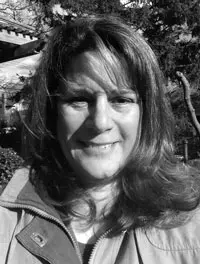US EPA Plans to Renew Debate on PPE Use
The US Environmental Protection Agency (EPA) intends to reconsider the previous administration’s assumptions on a worker’s use of personal protective equipment (PPE) when conducting Toxic Substances Control Act (TSCA) chemical safety evaluations. EPA assumed workers will follow workplace safety mandates to wear PPE when gauging chemical exposure risk pursuant to TSCA-mandated chemical assessments. The agency now is considering whether this assumption is reasonable. Critics of the more stringent approach being considered by EPA have argued that if the agency reaches its own conclusions on whether workers are using protective gear or if that gear is helpful, it could end up setting requirements that conflict with Occupational Safety & Health Administration (OSHA) workplace safety rules. EPA has downplayed those claims, stating that the agency intends to avoid redundant rules.
VOC Reduction Regulation in Canada Mirrors California Rules
The Canadian government has signaled its intent to develop specific measures to further reduce volatile organic compound (VOC) emissions from consumer and commercial products from the present through 2028. The Canadian government has released the “Federal Agenda on the Reduction of Emissions of Volatile Organic Compounds (VOC) from Consumer and Commercial Products.” Proposed measures for special focus include architectural coatings; automotive refinishing products; commercial and industrial adhesives and sealants; and printing.
US EPA Announces Updates to TSCA New Chemicals Program
Earlier this year, US EPA announced it would evaluate its policies, guidance, templates and regulations under the TSCA new chemicals program to ensure adherence to statutory requirements. EPA identified several instances in which its approach to making determinations and managing risks associated with new chemicals can more closely align with TSCA’s requirements to ensure protections for human health and the environment, including the use of significant new use rules (SNUR) and assumptions related to worker exposures.
States That Imposed the Highest Number of Chemical Laws in 2020
In addition to TSCA, which regulates chemicals across the country, individual states also can impose their own laws, which can lead to additional restrictions on certain chemicals or processes. The Chemical Watch US legislation tracker monitors every state-level regulatory development throughout the year, allowing interested parties to keep an eye on the progress of relevant bills across all states. Learn more at https://home.chemicalwatch.com/us-state-legislation-infographic/.
SGP Grows Its Community in Q2 2021
The Sustainable Green Printing Partnership (SGP) announced significant expansion of the SGP community. Newly certified facilities include Meyers and a fourth location of Smyth Companies, both located in Minneapolis, Minnesota. Polymershapes became a gold SGP Patron. Sun Chemical renewed its support as a gold SGP Patron, along with Piedmont Plastics (gold), Primex Plastics (silver) and Conversource (silver). SGP expanded its network of experts by adding new SGP Resource Partners including Consortium from Waste to Syngas Circularity, European Marketing Group, Print Releaf and affiliates – Printing Industry of the Carolinas, Printing Industries of New England and Printing Industries Association of Southern California. Every member of the print supply chain has a part to play in the sustainability movement. Why not join the SGP community? Contact Doreen Monteleone for details at Doreen@RadTech.org.
Doreen M. Monteleone, Ph.D.
Director of Sustainability & EHS Initiatives
RadTech International North America
doreen@radtech.org
News From the West Coast
CARB Proposed Ban on Hexavalent Chromium
The California Air Resources Board (CARB) has released proposed language for its Airborne Toxic Control Measure (ATCM) for Chromium Plating and Chromic Acid Anodizing Facilities. According to CARB staff analysis documents, “The electrical charge during the chrome plating process causes the hexavalent chromium to be emitted from the bath as an aerosol that, once emitted from the facility, can be inhaled and entrained inside the lungs.” CARB materials indicate that the 130 platers in the state emit about 4 pounds of hexavalent chromium per year, less than the 10.7-pound maximum that the state currently allows, calculated based on the maximum permissible rate of 0.0015 milligrams per amp-hour per chrome plater.
CARB staff discussed trivalent chromium as a potential replacement for hexavalent chromium. Hexavalent chromium (chromium VI), has been identified as a toxic air contaminant in California since 1986. Fume suppression products used to reduce emissions of hexavalent chromium also have been identified as problematic. Trivalent chrome (chromium III) is not considered a carcinogen. However, representatives of the metal finishing industry have expressed concern that trivalent chrome products do not have the same color as the hexavalent chrome and would not match existing items plated with hexavalent chrome. The following table summarizes CARB’s proposal:
Additionally, air pollution control devices or chemical fume suppressants are required to be installed before the effective dates of the phase-out provisions. The proposed regulation is expected to be considered for final adoption sometime in the summer of 2022.
California Community Air Protection Program
The California Air Resources Board (CARB) established the Community Air Protection Program as part of its implementation of Assembly Bill 617, which became state law in 2017. The program requires “new community-focused actions to reduce air pollution and improve public health in communities that experience disproportionate burdens from exposure to air pollutants.” Ten communities throughout California were selected to participate in the first phase of the program and an additional five were identified recently. Southeast Los Angeles, recently selected, has formed a community steering committee to work with the South Coast Air Quality Management District (SCAQMD) to develop the Southeast Los Angeles Community Emissions Reduction Plan to reduce exposure to air pollution in the community.
Permit Exemption for UV/EB Undermined
The SCAQMD board has committed to policies that provide incentives for businesses that choose UV/EB/LED processes. One such incentive – SCAQMD Rule 219, Permit Exemptions – is the removal of regulatory barriers to implementation of the technology by not requiring permits. RadTech recently became aware that the current SCAQMD staff interpretation of Rule 219 undermines the board’s well established public policy by unfairly penalizing companies that partially convert to UV/EB/LED for the emissions of conventional solvent system.
RadTech provided an example of a Southern California company that converted part of its process line to UV – adding a UV material to its existing solvent-borne coating. The company was charged $7,000 for a permit when all emissions were found to be zero. According to staff, a permit evaluation was required because it was a modification of the existing solvent system. However, the emissions from the solvent process already were accounted for in the prior permit. RadTech made comments to the SCAQMD Stationary Source Committee, noting that the district’s Rule 219 would have provided an exemption if the UV operation had been looked at as a separate source of emissions from the solvent system. RadTech is advocating for a change in Rule 219 that would exempt partial conversions to UV/EB. Rule 219 currently is scheduled for amendments sometime in 2022, and the staff has signaled that they want to focus on gasoline dispensing. RadTech will continue its efforts to remove the additional burden of regulations to end users of UV/EB/LED technology. RadTech’s public comments can be found at www.aqmd.gov by clicking on the webcast tab. Comments can be seen from 1:48:24 to 1:51:35.
 Rita Loof
Rita Loof
Director of Regional Environmental Affairs
RadTech International North America
rita@radtech.org




